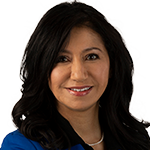Women and wealth: Simple ways to build a solid foundation
Women face unique challenges when it comes to retirement planning. Retirement Director Marquette Payton outlines five steps to help you take control of your finances.

4 minute read
Key takeaways:
- Women control an increasing share of wealth in the U.S., but the persistent wage gap makes it challenging for female investors to save enough for retirement.
- While female entrepreneurs may not have to deal with someone else setting their salary, they still need to balance the needs of their businesses with their own finances.
- Taking stock of your current financial picture, setting clear targets, and preparing for the unexpected by establishing an emergency savings account can help reduce stress and improve financial health.
Women are an economic powerhouse. They are starting more businesses and controlling more wealth than even just a few years ago. Yet, retirement planning is still a challenge, with older women receiving about 80% of the retirement income older men receive, even though women live longer than men.1
Furthermore, the wage gap in the U.S. remains persistent: Women earned 84 cents for every dollar earned by men in 2021.2 This means women are losing out on hundreds of thousands of dollars in earnings over the course of their careers, which equates to less money available to sock away for retirement.
Female entrepreneurs may not have to deal with someone else setting their salary, but they do need to balance the needs of their business with their personal finances. Many women, including business owners, feel stressed and lack confidence when it comes to long-term financial planning, even though female investors outperform men.3
The following five steps are designed to help female investors reduce stress and improve financial health so they can focus on what matters – including growing their business.
1. Take stock. Be sure to get a full understanding of your financial picture by gathering relevant financial documents, including three years of tax returns, bank statements, and beneficiary information. Consider keeping them in a centralized location, such as a fireproof safe. Studies show that 90% of women will be solely responsible for managing long-term financial planning at some point in our lives, so it’s beneficial if we can prepare ourselves for that role sooner rather than later.
You may also want to set a monthly budget – a household balance sheet – to understand your spending and identify places to save. Additionally, it’s generally a good idea to prioritize paying down high-income debts to free up money you can invest or save. The sooner you begin saving, the better, because you can take advantage of compound interest, on both the money you save and the money you earn.
2. Set a clear target. If you haven’t already, set a retirement savings goal. A financial advisor can help you determine a target that makes sense for your lifestyle and income streams. A financial advisor can also weigh the pros and cons of different retirement plans – an especially important step if you’re an entrepreneur, as you are probably not contributing to an outside employer-sponsored plan.
3. Make a date with your finances. Get in the habit of reviewing your finances, including your retirement savings, monthly. If you have a partner, do it together. Couples who handle financial planning together feel more confident about their finances than those who don’t, according to a study by Janus Henderson Investors and Kansas State University.4
4. Factor in healthcare costs. A report from the Employee Benefits Research Institute estimates that a 65-year-old couple could need as much as $383,000 in savings to cover healthcare expenses in retirement.5 Thus, you should consider healthcare expenses as you make your retirement plan. Health savings accounts allow you to save for health expenses in retirement while reaping tax benefits.
5. Prepare for the unexpected. No one can predict the future. Consider establishing an emergency fund to help ease emotional stress in the event of an emergency or unforeseen expense, such as unemployment or a hefty home repair. This fund should be separate from your day-to-day finances, so you’re not tempted to tap it. The goal is to save six to 12 months of living expenses, which may feel overwhelming. But with time and intention, you can make it happen.
We women have faced an uphill battle for a very long time. While we can hope for progress on that front in years ahead, the reality is that we need to be proactive, we need to be intentional, and we need to find ways to stay on track to reaching our goals, despite all the extra challenges we face.
This article originally appeared in Inc. in December 2023.
1 “Still Shortchanged: An Update on Women’s Retirement Preparedness.” National Institute on Retirement Security, May 2020.
2 “Gender pay gap in U.S. hasn’t changed much in two decades.” Pew Research Center, March 2023.
3 “Women May Be Better Investors Than Men. Let Me Mansplain Why.” New York Times, October 2021.
4 “The value of a financial professional is more than dollars and cents.” Janus Henderson Investors, Kansas State University, December 2023.
5 “Medicare expenses in retirement could top $383,000 for a couple with high drug costs, study finds.” CNBC, February 2023.
JHI
Queste sono le opinioni dell'autore al momento della pubblicazione e possono differire da quelle di altri individui/team di Janus Henderson Investors. I riferimenti a singoli titoli non costituiscono una raccomandazione all'acquisto, alla vendita o alla detenzione di un titolo, di una strategia d'investimento o di un settore di mercato e non devono essere considerati redditizi. Janus Henderson Investors, le sue affiliate o i suoi dipendenti possono avere un’esposizione nei titoli citati.
Le performance passate non sono indicative dei rendimenti futuri. Tutti i dati dei rendimenti includono sia il reddito che le plusvalenze o le eventuali perdite ma sono al lordo dei costi delle commissioni dovuti al momento dell'emissione.
Le informazioni contenute in questo articolo non devono essere intese come una guida all'investimento.
Non vi è alcuna garanzia che le tendenze passate continuino o che le previsioni si realizzino.
Comunicazione di Marketing.


